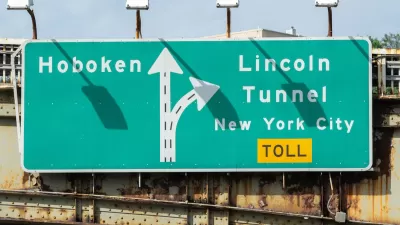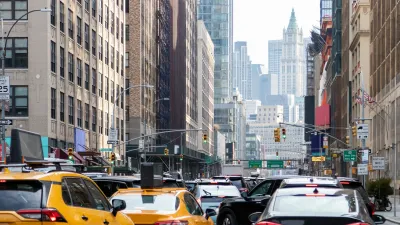The city’s cordon pricing scheme did not affect how much people spent at local businesses, new research finds.

London’s congestion pricing zone, known as the Ultra Low Emission Zone (ULEZ), has not economically harmed local businesses, according to new research.
In an analysis of credit card transactions within the zone, “The 2023 trend line does not fall below the 2022 one: there was no above–expected negative spending effect caused by ULEZ’s expansion.”
According to a post in Centre for Cities by Oscar Selby, “So far, card transaction data does not suggest that ULEZ is harming high street spend. This should reassure policy makers in London, who committed to the emission zone a while ago, and strengthen the convictions of policy makers in New York who are now following suit.”
Meanwhile, the public health and transit benefits are clear, both in London — “London has the worst air quality of any UK city and the capital’s emission zone is helping to change this” — and, more recently, in New York, where the congestion pricing program’s first week yielded faster bus commutes and reduced congestion.
FULL STORY: ULEZ expansion hasn’t hurt high street spending

Alabama: Trump Terminates Settlements for Black Communities Harmed By Raw Sewage
Trump deemed the landmark civil rights agreement “illegal DEI and environmental justice policy.”

Planetizen Federal Action Tracker
A weekly monitor of how Trump’s orders and actions are impacting planners and planning in America.

The 120 Year Old Tiny Home Villages That Sheltered San Francisco’s Earthquake Refugees
More than a century ago, San Francisco mobilized to house thousands of residents displaced by the 1906 earthquake. Could their strategy offer a model for the present?

Ken Jennings Launches Transit Web Series
The Jeopardy champ wants you to ride public transit.

BLM To Rescind Public Lands Rule
The change will downgrade conservation, once again putting federal land at risk for mining and other extractive uses.

Indy Neighborhood Group Builds Temporary Multi-Use Path
Community members, aided in part by funding from the city, repurposed a vehicle lane to create a protected bike and pedestrian path for the summer season.
Urban Design for Planners 1: Software Tools
This six-course series explores essential urban design concepts using open source software and equips planners with the tools they need to participate fully in the urban design process.
Planning for Universal Design
Learn the tools for implementing Universal Design in planning regulations.
Clanton & Associates, Inc.
Jessamine County Fiscal Court
Institute for Housing and Urban Development Studies (IHS)
City of Grandview
Harvard GSD Executive Education
Toledo-Lucas County Plan Commissions
Salt Lake City
NYU Wagner Graduate School of Public Service





























